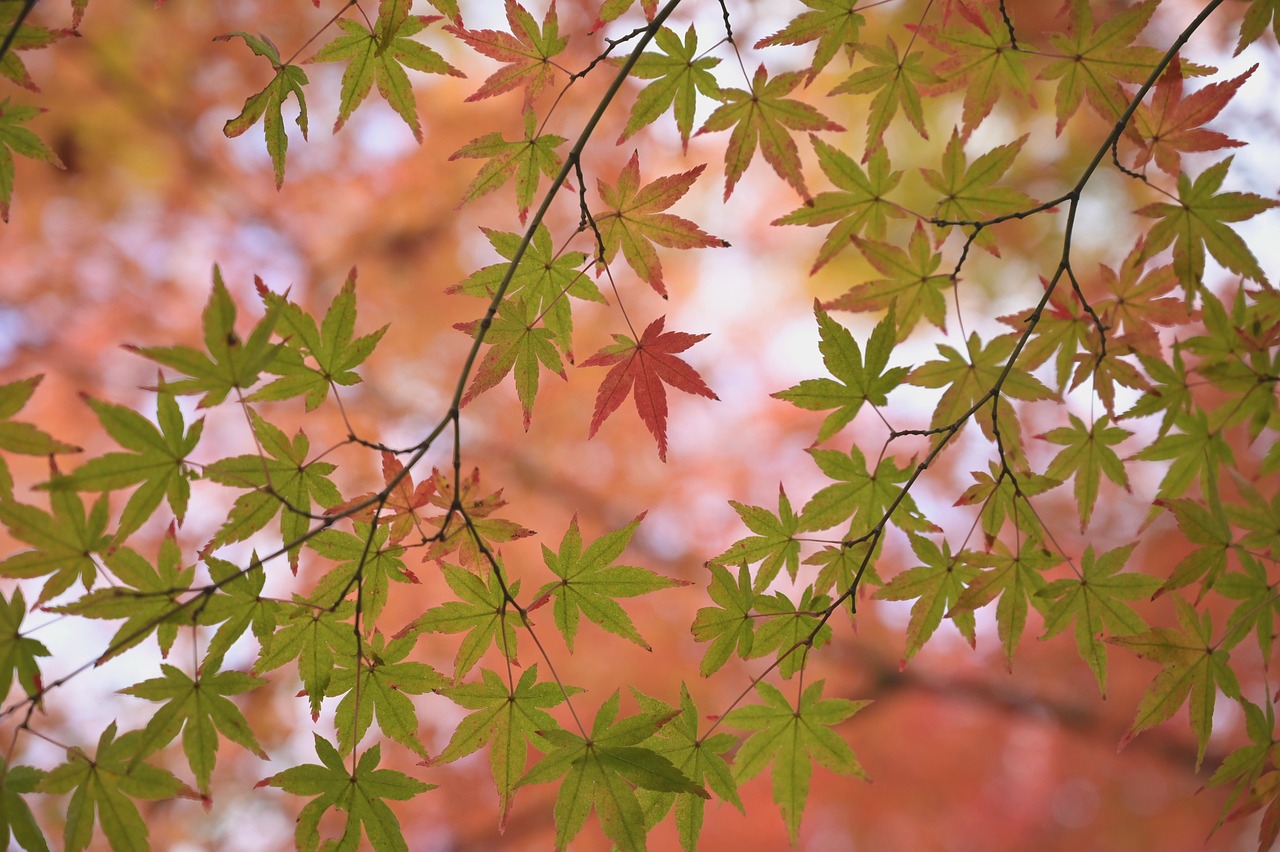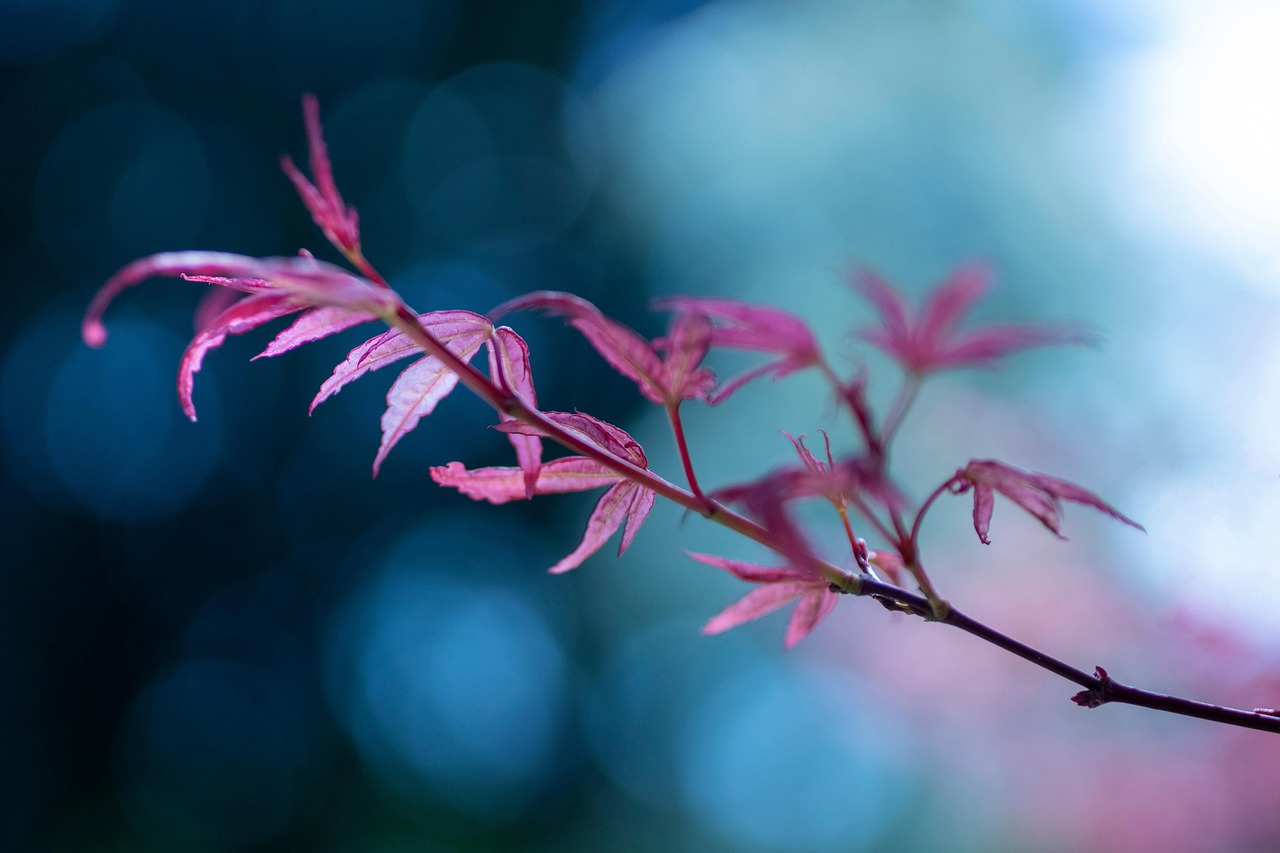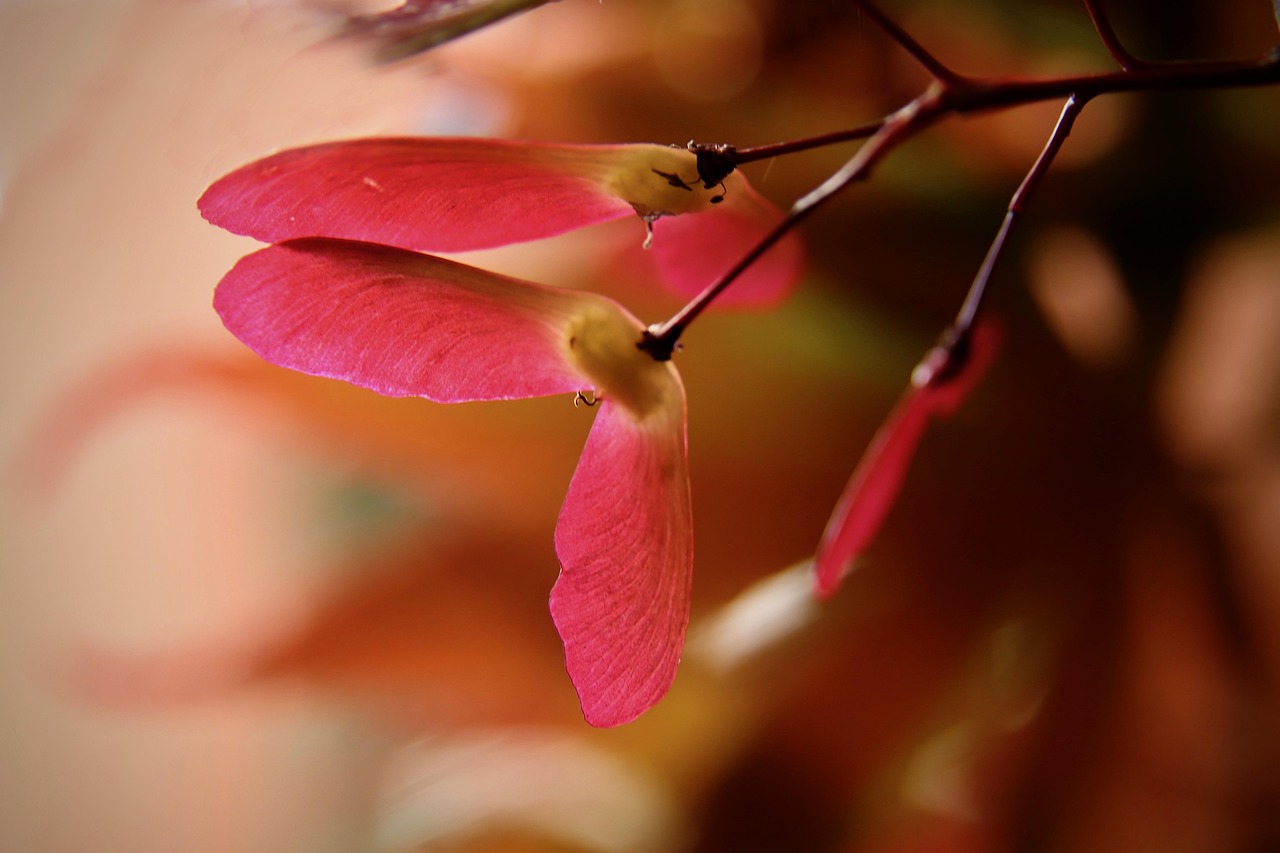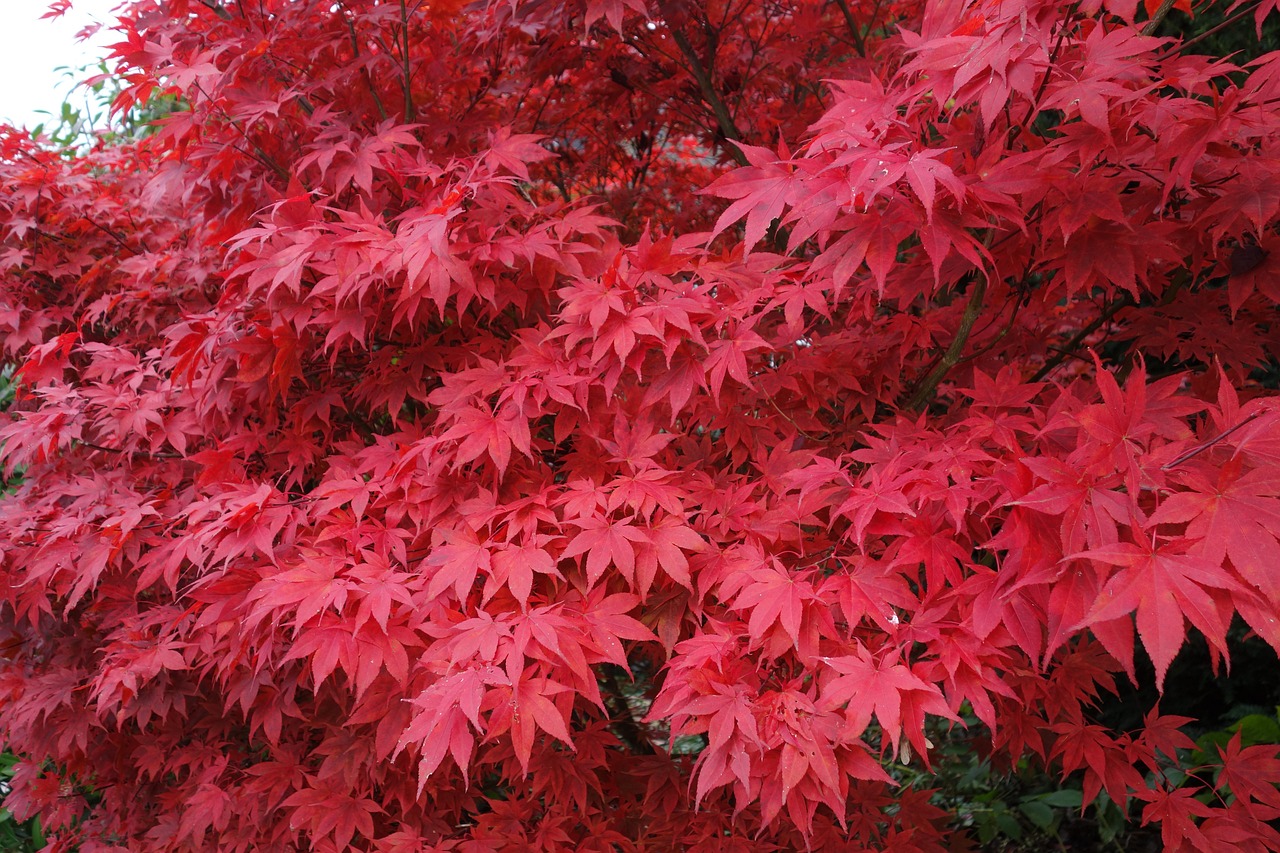Pruning Japanese maple trees for artistic design enhances their natural beauty, promotes healthy growth, and allows for creative expression. Proper pruning techniques can shape the tree’s structure, improve light penetration, and maintain the desired size and form.
Japanese maple trees, known for their stunning foliage and graceful shapes, have become popular choices in gardens and landscapes. With over 300 varieties, these trees display a wide range of colors, leaf shapes, and sizes. Pruning them is not just about maintaining their health but also about sculpting them into living art pieces. Understanding the best practices for pruning is essential for anyone looking to create a unique landscape feature with these trees.

Before delving into the techniques of pruning, it is important to recognize the ideal time to prune Japanese maples. The best time is typically in late winter or early spring before new growth begins. This timing minimizes stress on the tree and allows for quicker healing. However, light trimming can be done throughout the year to remove dead or damaged branches.
Understanding Japanese Maple Tree Growth
Japanese maple trees tend to grow slowly and can take several years to reach their full size. Their growth habit varies significantly among different varieties. While some may grow upright, others exhibit a more sprawling habit. Understanding these growth patterns helps in planning how to prune effectively.
Here are some key characteristics of Japanese maple tree growth:

| Characteristic | Description |
|---|---|
| Growth Rate | Slow to moderate, depending on variety and conditions. |
| Height | Ranges from 3 to 30 feet based on variety. |
| Spread | Can vary widely; some forms are compact while others spread out widely. |
| Leaf Color | Diverse color options including red, purple, green, and variegated. |
When planning to prune a Japanese maple, it is crucial to consider its natural shape. Each tree has a specific form that can be enhanced through selective pruning. This can include removing unwanted branches, encouraging new growth, or maintaining an elegant silhouette. The goal is to enhance the tree’s beauty while ensuring it remains healthy.
Essential Pruning Techniques
There are several techniques for pruning Japanese maples that can help achieve the desired artistic design. Below are some fundamental techniques to consider:
- Crown Thinning: This involves selectively removing branches within the canopy to allow more light and air circulation. It helps reduce weight on the branches and can prevent diseases.
- Crown Raising: This technique involves removing lower branches to create more space beneath the tree. It can enhance visibility and showcase the tree’s trunk.
- Crown Reduction: For trees that have outgrown their space, crown reduction reduces the overall size while maintaining the tree’s natural shape.
- Dead Branch Removal: Regularly check for and remove dead or damaged branches. This encourages new growth and prevents potential diseases.
Each of these techniques can be used individually or in combination to achieve the desired look. It is important to approach pruning with care, ensuring that cuts are clean and made at appropriate locations on the branches. Tools such as sharp pruners or loppers are essential for making clean cuts that heal quickly.

Tools Needed for Pruning
Having the right tools makes a significant difference in the pruning process. Here are some essential tools for pruning Japanese maple trees:
- Hand Pruners: Ideal for small branches and precise cuts.
- Loppers: Useful for cutting larger branches that are too thick for hand pruners.
- Pruning Saw: Necessary for removing larger limbs that require more force.
- Gloves: Protect your hands from cuts and sap.
Using sharp tools not only makes the job easier but also ensures cleaner cuts, which promotes faster healing of the tree. Regular maintenance of tools is also necessary to keep them effective.
In conclusion, understanding the art of pruning Japanese maple trees requires knowledge of their growth patterns, proper techniques, and appropriate tools. With careful consideration and practice, anyone can enhance these beautiful trees into stunning focal points in their gardens or landscapes.

Seasonal Considerations for Pruning
Understanding the seasons is crucial when it comes to pruning Japanese maple trees. Different times of the year can influence how the tree responds to pruning. Each season presents unique opportunities and challenges for pruning practices.
Winter Pruning
Winter, particularly late winter, is often the best time to prune Japanese maples. During this period, the tree is dormant, which minimizes stress and allows for easier visibility of the tree’s structure. Here are some benefits of winter pruning:
- Reduced Stress: Pruning when the tree is dormant helps it recover more quickly.
- Improved Visibility: Without leaves, it is easier to see the branch structure and identify any issues.
- Encouraged Growth: Pruning in winter can stimulate new growth in the spring, leading to healthier foliage.
Spring Pruning
Spring is another suitable time for pruning, particularly before the new growth begins. However, it is essential to be cautious during this time as the tree starts to awaken. The main focus during spring pruning should include:
- Removing Deadwood: Clearing away any dead or damaged branches helps promote healthy growth.
- Shaping: Lightly trimming to shape the tree can enhance its aesthetic appeal as new leaves emerge.
Summer Pruning
Summer pruning can also be beneficial but should be approached with care. It is generally not recommended for major cuts, but light trimming can be done to manage growth. Some key points about summer pruning include:
- Controlling Growth: Summer pruning can help control excessive growth and maintain the tree’s desired shape.
- Removing Suckers: It is an excellent time to remove any suckers or unwanted shoots that may emerge.
Fall Pruning
Pruning in the fall is usually discouraged. The tree is preparing for dormancy, and cuts made during this time can leave it vulnerable to disease and stress. If necessary, only minimal pruning should be done in the fall.
Techniques for Artistic Design
Pruning for artistic design requires creativity and an understanding of how different cuts will affect the overall appearance of the tree. Here are some specific techniques that can enhance the artistic qualities of Japanese maples:
Selective Branch Removal
This technique involves carefully choosing which branches to remove to create a specific shape or to highlight certain features of the tree. When applying selective branch removal, consider the following:
- Focus on Structure: Remove branches that disrupt the natural flow or symmetry of the tree.
- Create Balance: Aim for a balanced appearance by thinning out crowded areas while preserving key branches.
Layering Technique
The layering technique involves creating depth and dimension by strategically removing branches at different heights. This adds visual interest and complexity to the tree’s design. Key points include:
- Varying Heights: Keep some branches lower and others higher to create layers.
- Enhancing Foliage: Ensure that lower branches allow light to reach the upper layers, promoting healthy growth.
Artistic Shaping
Shaping involves a more dramatic approach and can transform a Japanese maple into a statement piece in a garden. Techniques include:
- Bonsai Techniques: For those interested in bonsai, techniques can be applied to miniaturize and shape the tree effectively.
- Sculptural Forms: Create unique shapes by emphasizing curves and angles through selective cuts.
Pest and Disease Management Post-Pruning
After pruning, it is vital to monitor the tree for any signs of pests or diseases. Pruning can sometimes expose trees to vulnerabilities if not done correctly. Here are some strategies for managing pests and diseases after pruning:
- Cleansing Cuts: Use a clean blade when making cuts to prevent introducing pathogens into the tree.
- Regular Inspections: Frequently check for signs of pests such as aphids or scale insects, as well as fungal infections.
- Pesticide Applications: If necessary, apply organic pesticides or fungicides to protect the tree from potential threats.
By integrating these practices into your pruning routine, you can ensure that your Japanese maple not only retains its beauty but also thrives in its environment, showcasing its artistic design for years to come.
Common Mistakes to Avoid When Pruning
Pruning Japanese maple trees requires careful attention and technique. However, there are common mistakes that many gardeners make that can harm the tree’s health or aesthetic. Being aware of these pitfalls can help ensure successful pruning.
Over-Pruning
One of the most prevalent mistakes is over-pruning. This occurs when too many branches are removed in one session. Over-pruning can lead to:
- Weak Growth: Removing excessive foliage can diminish the tree’s ability to photosynthesize effectively.
- Stress: A stressed tree becomes more susceptible to diseases and pests.
- Unnatural Shape: Over-pruning can alter the natural beauty and form of the tree, making it look unnatural.
Improper Timing
Pruning at the wrong time of year can significantly impact the health and appearance of a Japanese maple. To avoid this mistake:
- Avoid Fall Pruning: As mentioned earlier, fall pruning can leave the tree vulnerable to winter injury and diseases.
- Be Cautious in Spring: While spring pruning is acceptable, it should be done before new growth begins to avoid removing potential leaves.
Poor Cutting Techniques
Using improper cutting techniques can lead to damage and slow recovery. Here are some cutting practices to avoid:
- Ragged Cuts: Always use sharp tools. Ragged cuts take longer to heal and can become entry points for pests.
- Cutting Too Close to the Trunk: Make sure to leave a small collar when cutting branches to promote healing.
- Cuts at the Wrong Angle: Ensure cuts are made at a slight angle to help water runoff and prevent rot.
Understanding Tree Anatomy for Better Pruning
A fundamental understanding of Japanese maple tree anatomy is crucial for effective pruning. Knowing where to cut and what to look for can enhance your pruning skills.
Main Components of a Tree
The primary components of a Japanese maple include:
- Branches: These extend from the trunk and support leaves, flowers, and fruit.
- Trunk: The central stem that supports the entire tree structure.
- Canopy: The upper layer formed by leaves and branches, which plays a vital role in photosynthesis.
- Roots: These anchor the tree and absorb water and nutrients from the soil.
Identifying Branch Types
Understanding different types of branches helps in making informed pruning decisions. Common branch types include:
- Main Branches: Thick, primary branches that provide structure.
- Lateral Branches: Smaller branches extending from main branches that contribute to the canopy.
- Suckers: Unwanted shoots that grow from the base or lower trunk, which should be removed.
The Aesthetic Principles of Pruning
Creating an artistic design with your Japanese maple involves understanding aesthetic principles. These principles guide how you shape and maintain your tree.
Balance and Symmetry
A balanced tree appears harmonious and pleasing to the eye. To achieve this:
- Selective Thinning: Remove branches that disrupt visual balance while keeping key structural elements intact.
- Height Variation: Maintain varying heights throughout the tree for a natural look.
Contrast and Focal Points
Creating contrast within the tree can highlight its beauty. Consider ways to introduce focal points:
- Add Color Variation: Use varieties with different leaf colors to create visual interest.
- Create Open Spaces: Leave gaps in the canopy to draw attention to the trunk or unique branch formations.
Flow and Movement
A well-pruned tree should convey a sense of flow and movement. To enhance this quality:
- Sculptural Cuts: Emphasize curves and angles that mimic natural movements in nature.
- Layering Techniques: Create depth by layering branches, giving a sense of cascading movement.
Advanced Pruning Techniques
For those looking to take their pruning skills to the next level, advanced techniques can help create stunning artistic designs with Japanese maples.
Bonsai Techniques
Bonsai pruning allows you to create miniature versions of Japanese maples. Key aspects include:
- Selective Leaf Pruning: Remove some leaves to reduce energy consumption and promote smaller growth.
- Wiring Branches: Gently wire branches to shape them into desired forms over time.
Coppicing and Pollarding
Coppicing involves cutting back a tree to ground level periodically, encouraging new growth from the base. Pollarding is similar but involves cutting back branches at a specific height. These techniques can create dramatic effects in landscapes.
- Coppicing Benefits: Encourages bushy growth, ideal for creating dense foliage.
- Pollarding Benefits: Maintains height while allowing for a well-defined canopy shape.
By applying these advanced techniques, you can further elevate the artistic design of your Japanese maple trees, ensuring they remain a beautiful centerpiece in your landscape.
Maintaining Japanese Maple Trees After Pruning
After the pruning process is complete, maintaining the health and beauty of your Japanese maple is crucial. Proper care will ensure that your tree thrives and continues to enhance your landscape. Here are some tips for post-pruning care:
Watering and Fertilizing
Proper watering and fertilization help support recovery after pruning. Here are some best practices:
- Watering: Ensure the tree receives consistent moisture, especially during dry spells. Deep watering encourages root growth.
- Fertilizing: Use a balanced fertilizer in early spring to provide necessary nutrients. Avoid over-fertilization, as this can lead to excessive growth that may require further pruning.
Mulching
Applying mulch around the base of the tree can provide multiple benefits:
- Moisture Retention: Mulch helps retain soil moisture, reducing the need for frequent watering.
- Weed Suppression: A good layer of mulch can prevent weeds from competing with your tree for nutrients.
- Temperature Regulation: Mulch can help regulate soil temperature, protecting roots during extreme weather conditions.
Monitoring Health
Regularly check your Japanese maple for any signs of stress or disease following pruning. Look for:
- Pests: Keep an eye out for common pests such as aphids or spider mites.
- Diseases: Watch for symptoms of fungal infections or leaf spot diseases.
- Growth Patterns: Monitor how the tree responds to pruning and ensure that new growth is healthy and vigorous.
Creating a Pruning Schedule
Establishing a consistent pruning schedule helps maintain the artistic design of your Japanese maple trees while promoting their overall health. Consider the following points when creating a schedule:
- Annual Pruning: Plan to prune annually, focusing on refining shape and removing dead or damaged branches.
- Seasonal Checks: Conduct seasonal inspections to identify any necessary light trimming or adjustments.
- Documentation: Keep records of your pruning activities to track progress and changes in the tree’s growth pattern over time.
Cultural Significance of Japanese Maples
The Japanese maple holds significant cultural value in Japan and beyond. They symbolize grace, elegance, and the beauty of nature. Here are some aspects of their cultural significance:
- Aesthetic Value: Japanese maples are often featured in traditional Japanese gardens, representing harmony between nature and human design.
- Meditative Spaces: Their delicate foliage and graceful forms create serene environments that encourage reflection and tranquility.
- Seasonal Changes: The vibrant colors of the leaves throughout the seasons reflect the beauty of change, symbolizing the transient nature of life.
Conclusion
Pruning Japanese maple trees for artistic design is a rewarding endeavor that combines horticultural knowledge with creativity. Understanding the principles of pruning, seasonal considerations, and proper techniques can help you shape these stunning trees into beautiful focal points in your garden or landscape.
By avoiding common mistakes, applying advanced techniques, and maintaining proper care after pruning, you can ensure that your Japanese maples not only thrive but also continue to capture the eye with their graceful forms and vibrant colors. The journey of sculpting these trees into works of art is an ongoing process that allows for personal expression and connection with nature.
Your commitment to nurturing these trees will contribute to their longevity and beauty, enhancing your outdoor space for years to come. Whether you are a seasoned gardener or a beginner, embracing the art of pruning Japanese maples can bring joy and satisfaction as you witness the transformation of these remarkable trees.
